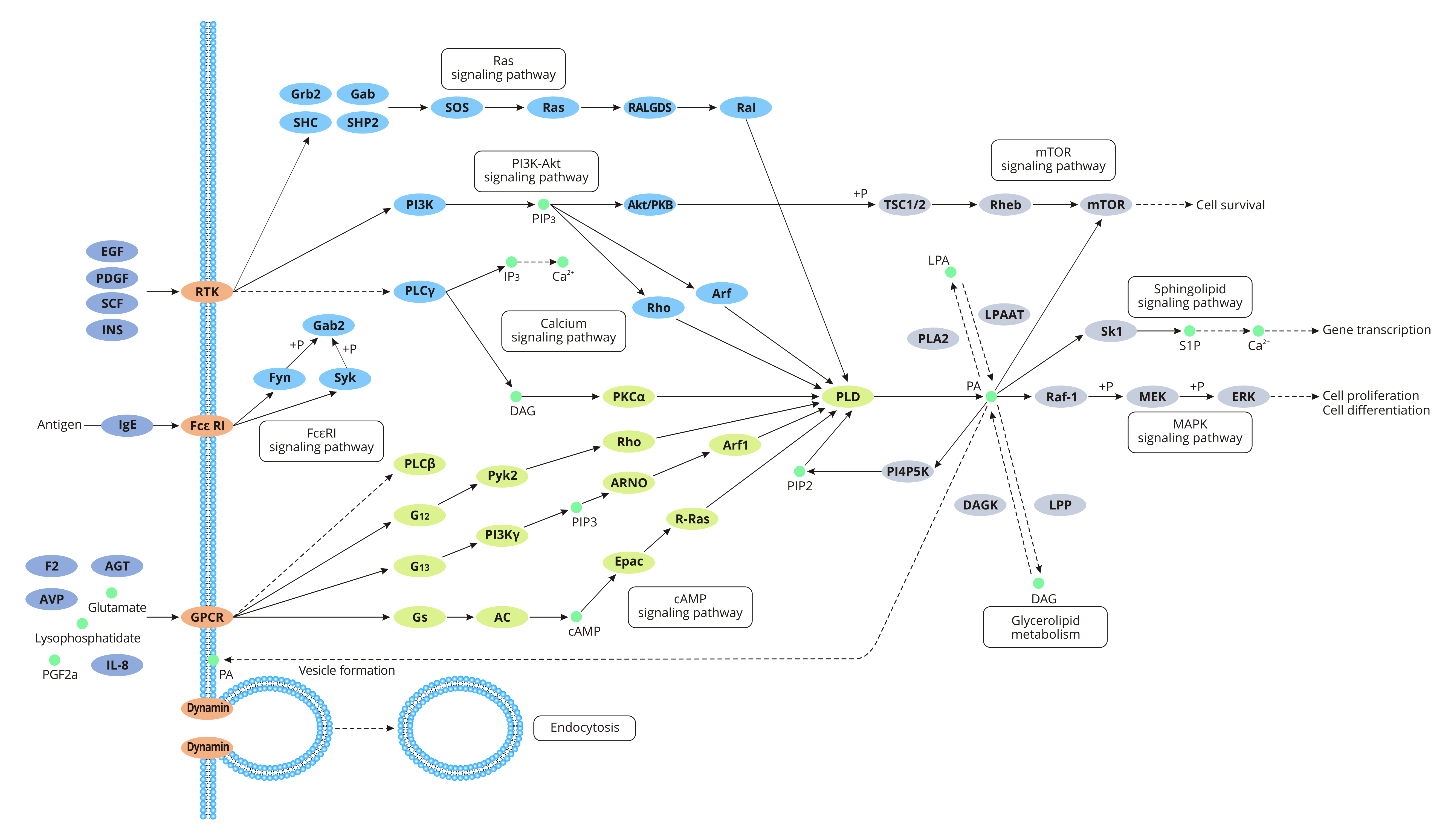
What Is Phospholipase D?
Phospholipase D (PLD) is a member of phospholipase superfamily that hydrolyzes glyceryl phosphatide. Phospholipase D is ubiquitous in many organisms, including bacteria, viruses, yeast, plants, and animals. There are many isoforms of PLD in plants. Mammals have two identified PLD isoenzymes: PLD1 and PLD2.
Phosphatidylserine, phosphatidylethanolamine, and sphingomyelin are the substrates of bacterial and yeast PLD. In mammals, PLD only uses phosphatidylcholine as its substrate. And PLD catalyzes the hydrolysis of phosphatidylcholine (PC) to produce phosphatidic acid (PA) and choline. In addition to the hydrolytic action, PLD also has the transphosphatidylation activity. Studies have shown that PLD exerts regulatory functions through PLD-produced PA which serves as a secondary messenger to convert external stimuli into physiological responses.
What Is the Phospholipase D Signaling Pathway?
Phospholipase D signaling pathway refers to the process by which PA, one of the hydrolytic products of PLD, serves as a secondary messenger to involve in a series of signaling cascades.
The Function of the Phospholipase D Signaling Pathway
Phospholipase D signaling pathway is involved in multiple cellular processes such as intracellular protein trafficking, cytoskeleton organization, cell proliferation, cell survival, glycerolipid metabolism, and tumorigenesis.
The Process of Phospholipase D Signaling Pathway
PLD is activated by binding with hormones, growth factors, cytokines, and neurotransmitters, etc.
As elucidated above, phosphatidylcholine is hydrolyzed into PA and choline by PLD. mTOR, one of the direct targets of PA, is an important regulatory molecule for cell growth, including cell transcription, translation, and cytoskeletal reorganization. PA has the same mTOR binding domain as rapamycin. Studies have shown that PA inhibits the action of rapamycin by competitively binding to the FRB domain (FK506-binding protein-rapamycin-binding domain) of mTOR. The inhibition of rapamycin decontrols the inhibition of mTOR by rapamycin, initiating the mTOR signaling pathway that promotes cell survival.
PLD-generated PA binds to and activates sphingosine kinase 1 (SK1). The activation of SK1 stimulates the generation of sphingosine 1-phosphate (S1P), which initiates the sphingolipid signaling pathway.
Grb2 (growth factor receptor-bound protein 2) is a docking protein for PLD2. Grb2 binds to and activates PLD2. Active PLD2 induces the production of PA. PA recruits SOS to the plasma membrane. SOS activates the Ras oncogene and leads to the activation of Raf/MEK/ERK signaling molecules, causing cell transformation or proliferation.





